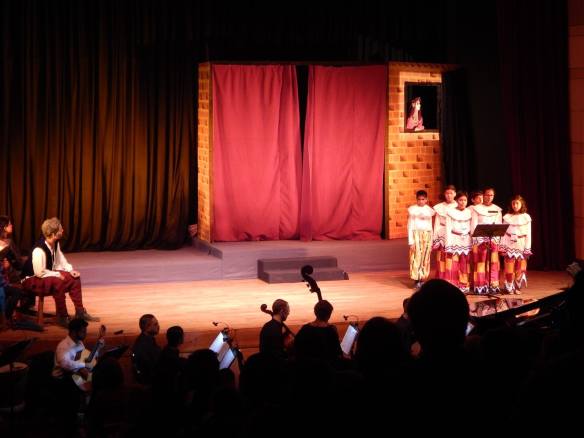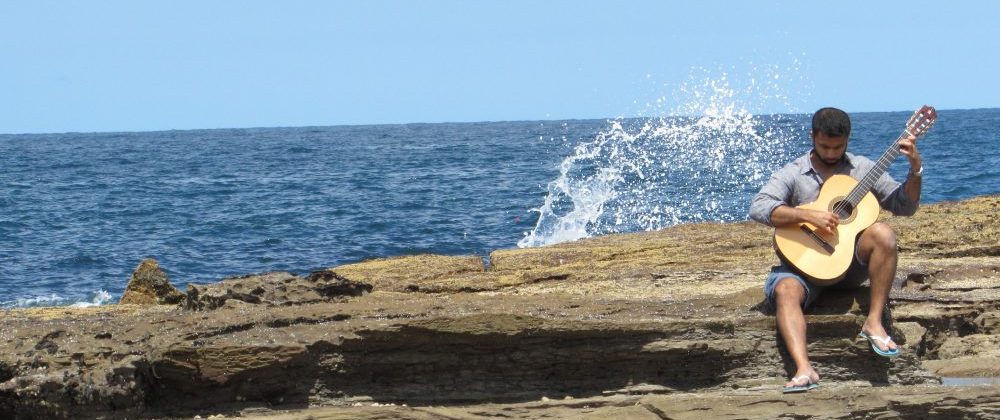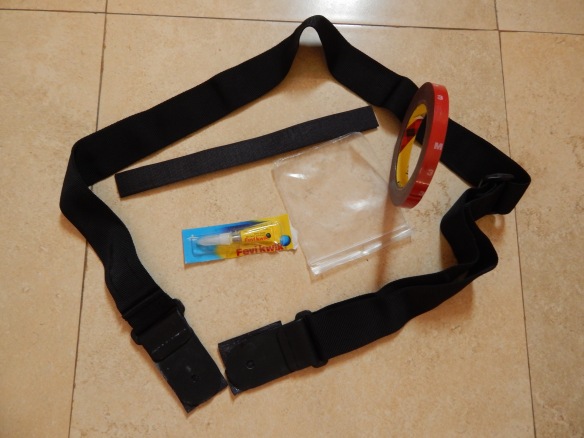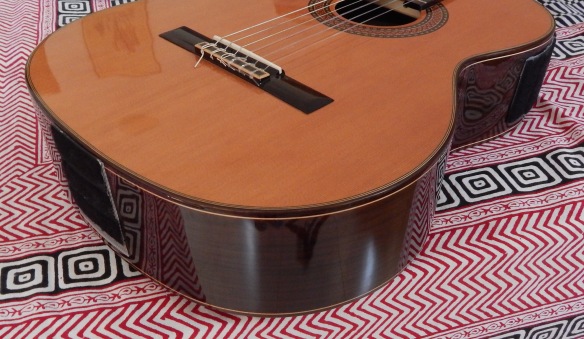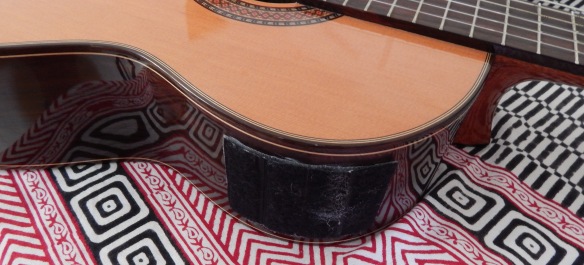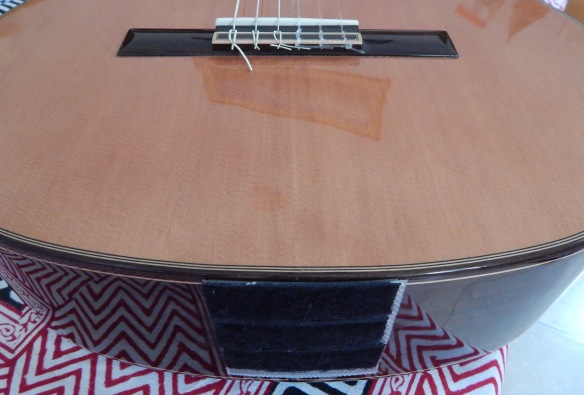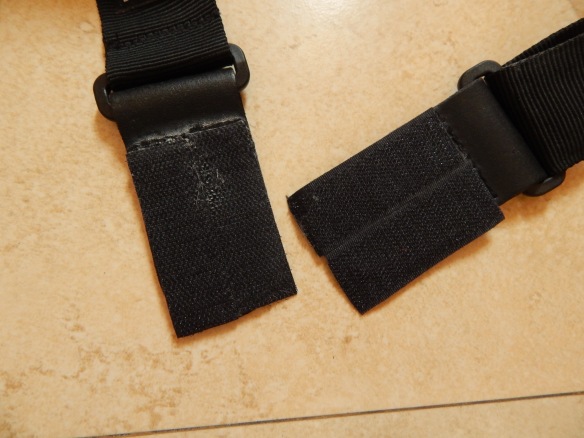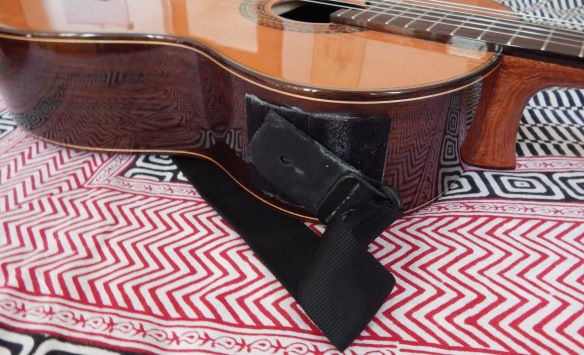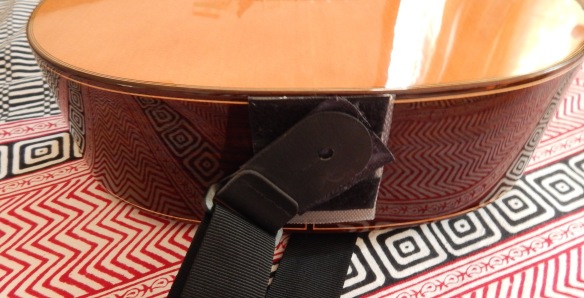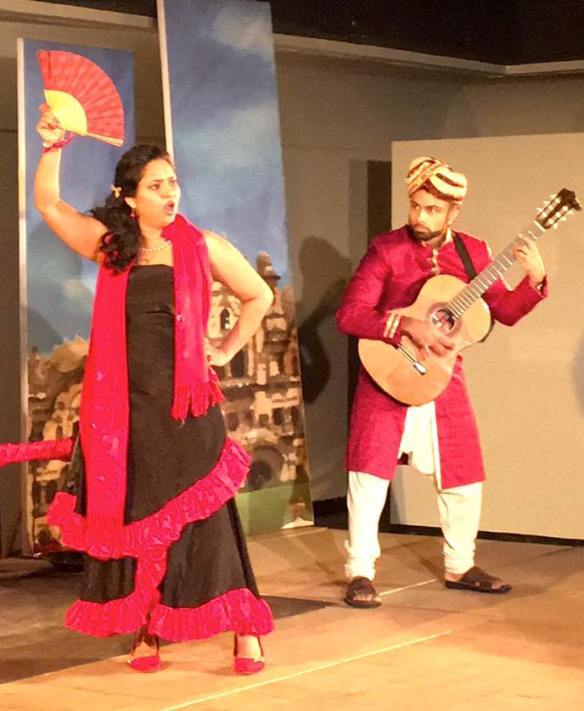This April, The Neemrana Music Foundation put on two operas by Manuel de Falla – La Vida Breve and El Retablo de Maese Pedro. As I mentioned on on my blog some time ago, I had the privilege of playing with the opera company in both productions. I had a conversation the other day with the Indian Guitar Federation’s director, Veda Aggarwal, who asked me some questions about the project. She very kindly invited me to share something of my Manuel de Falla opera double bill experience with IGF’s online magazine readers, so below is the result of a short interview she put to me via email.
VA: Could you give us a background into the two operas?
YP: I’ll begin with La Vida Breve, because it’s something we are familiar with as pertaining to the guitar, and yet the original work is so much more than the short piece that we guitarists know so well, and aspire to play in many cases. Though only a little over an hour long, La Vida Breve is a full opera, and happens to be among the most technically demanding operas commonly staged. The story is a tragedy in two acts, and closely mirrors a scandalous and heartbreaking real life event or situation that Falla witnessed. A well-born youth had a romantic affair with a young woman from a different (and less privileged) social class, and then left her to marry someone more ‘appropriate’ from his own class. The jilted young lady protested her fate very publicly, and then took her own life – though in the opera, Falla softened the details of her suicide, instead portraying her as dying of a broken heart. Apparently this was a news story that shocked Spanish society quite considerably at the time – it seems to me that Falla’s intent through the opera was to capture the tragedy of it, and through this portrayal of unrequited love soured further by the realities of class inequality, a perhaps to make a rather pessimistic statement on the cruelty with which humans are capable of treating one another.
El Retablo de Maese Pedro (which translates to Master Peter’s Puppet Show) is quite the opposite of La Vida Breve, in that it’s a much lighter fiction upon a fiction, and shows us a story of a beloved figure of Spanish culture, Don Quixote, essentially being himself. It’s a much shorter opera, running only about 30 minutes, and as the name suggests, it takes the form of a puppet show. In the opera, a traveling puppeteer puts on a theatrical production, aiming to tell heroic stories from the time of Charlemagne. Among the audience is Don Quixote, a greying old warrior who is given to spending his days thinking about and living amongst his memories of a life spent tilting at windmills. As the puppet show goes on, Don Quixote confuses the puppet theatre’s on-stage derring-do with real life events, and gets stirred up – he draws his sword and leaps on stage to take on the puppet ‘bad guys’ and save the puppet damsel in distress, in the process bringing the whole puppet theatre setup crashing down around him. The opera (and the puppet theatre) conclude with Don Quixote taking centre stage, and musing on the glory of chivalry and errant knights like himself, while in intended comedy, the puppeteer, Maese Pedro, laments the destruction of his puppet theatre.
VA: Classical guitar is for the most part, a solo instrument. Even when we perform with orchestra, it’s usually for a guitar concerto – where guitar is the featured instrument. What was your role like in these two operas?
YP: This was very far from a concerto-type experience, because rather than being something written especially with the guitar in mind, both operas belong to the wider realm of classical music, one of which (La Vida Breve) happens to use a guitar as a purely functional musical and dramatic device in service of the story at large.
My role in La Vida Breve was a pretty cut-and-dried guitar cameo that Falla wrote into the drama of the opera, in that I played the kind of traveling musician who would turn up at an event like a wedding, and accompany a singer (who would also be an itinerant musician like myself) on wedding-appropriate songs – much like a wedding band might do today, in many parts of the world, including here in India. Apart from the song linked above, and one other quite crucial narrative punchline that the baritone soloist I accompanied, Sherry Mathews, delivered, there were sundry little bits that I would play rhythmic chords for, in support of celebratory dramatic action happening on-stage during the wedding party. And if you have watched the video and are wondering, yes, I did improvise the start of Falla’s unrelated guitar composition Danza del Molinero (The Miller’s Dance) at the start of that song, because I thought it would set a nice tone, and work as a little extra homage to the composer on the occasion of his opera’s Asian debut.
In El Retablo de Maese Pedro, my role was to play the orchestral part Falla wrote for the harp-lute, so I was in the ‘pit’, with all the other instruments.
VA: Were the parts you played originally for guitar? If not, how did you transcribe them?
YP: In La Vida Breve, as I mentioned and linked to above, Falla actually wrote a baritone & guitar aria as part of the opera, along with a few other lines for the guitar, so really my role as a guitarist was to create a bit of culturally accessible musical ‘disruption’ on stage. In El Retablo de Maese Pedro, my part was a transcription of the harp-lute part, so even though it was mostly chords to add colour to the harpsichord part, and some rhythmic lines at various points, it took some transcribing to a) turn the harp-lute’s two clefs into one, and b) some editing to reduce passages with arpeggiations that were impossible or impractical on the guitar to meaningful chord progressions or a single line.
Transcribing is not that unfamiliar of a process for me, as I have done it in the past for some solo pieces I play, so it was really a question of sitting down over a few evenings and writing it out by hand the old fashioned way. What I thought was remarkable though, speaking of transcribing, was that Falla wrote even the bespoke guitar parts in La Vida Breve in the bass clef. I have no idea why he did that, considering guitar music has been written in treble since long before his time. If the transcribing aspect of the whole project made any particular impression on me, it was probably that by the end of some 90 pages for one opera and 300 for the other, I was probably the most proficient I’ll ever be at reading music in the bass clef!
VA: When we play in ensemble, it is usually with other guitarists or maybe one other chamber musician. What was it like performing with the entire orchestra?
YP: In a word? Humbling, and on so many levels! As a guitarist, I am naturally a little leery of reading at real tempi in rehearsals and performance, and to be surrounded by musicians who did that exceptionally well, as they all did, was quite something. Of course, as many have done before me, I also first spent some serious time alone with the score by myself. Also, I should clarify – this wasn’t a whole orchestra, so much as an ensemble playing a reduction whose members (2 violins, a cello, a flute, a clarinet, a double bass, timpani, piano, and guitar) represented sections of an orchestra.
In our performances, I found that sometimes the imperative of contributing to the orchestral sound in tempo and rhythm dictated that I edited my part more with the objective of carrying the musical idea forward intact, rather than with the objective of playing the maximum possible number of harp-lute notes in time. It was interesting to hear how tonic notes in a single line, when burbling along under the output of all the other instruments, added to a pretty complete musical effect, in spite of being unaccompanied by some higher arpeggiated notes that were not practical to play along with the tonic notes on the guitar. On a related note, it was also an interesting philosophical exercise to be a cog in such a big machine, so to speak, where no one line of music was the only important sound most of the time (except the piano perhaps, which took on the lion’s share of the orchestral reduction) – it was a very outside-the-ordinary discipline for me to devote myself to sounds that were meaningful to a greater whole, even though musically speaking, they were not particularly meaningful or even aesthetically pleasing by themselves. On perhaps a slightly cheeky note, let me add that as someone who usually plays solo, it was also a bit of a humbling experience because being the softest instrument in the pack, and playing behind two violins, a flute, a clarinet, and a cello, and next to a double bass, I was barely heard most of the time, unless I were to play either out of time or discordantly!
VA: Do you have any photos of yourself during the performance?
YP: I sure do! Both the Delhi performance of La Vida Breve and the one Serenade Magazine organised at Welham Boys’ School in Dehradun were memorable experiences, so first here is a picture of the principals, soloists, and musical director after our performance in Dehradun, followed by one of baritone soloist Sherry Mathews and myself performing the wedding song at the opening of Act II on stage at the Lotus Temple here in Delhi. You’ll notice in the first picture that I am standing beside flamenco maestro Paola Santa Cruz – in addition to an unaccompanied guitar aria, Falla wrote two flamenco dance interludes into the opera, which she rendered breathtakingly in both productions.

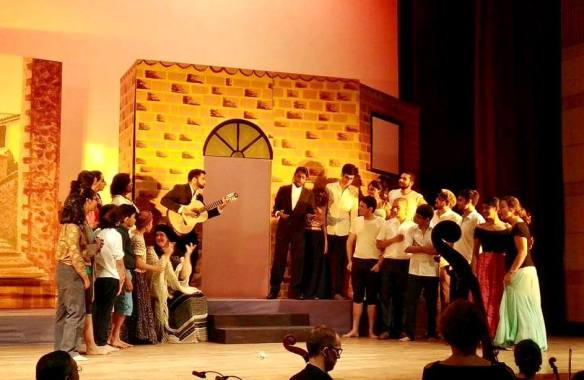
Also, here is one taken from the audience during our final performance of El Retablo de Maese Pedro – you can see the ensemble at work in our improvised pit beneath the stage at the Lotus Temple auditorium here in Delhi.
